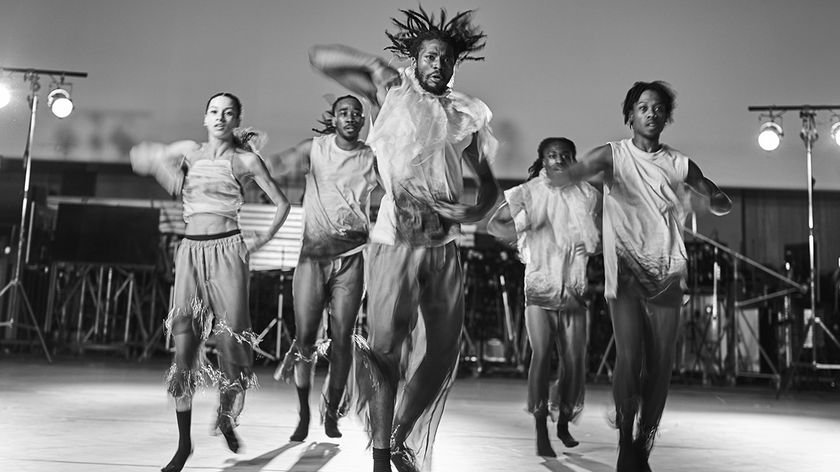The ultimate guide to guitar FX: filters
Everything you ever needed to know about effects pedals

Filter Pedals
YOU can use filter pedals to either accent or quite literally filter out particular frequencies of a sound. Think of a filter as a door that only lets certain frequency ranges through.
Low- and high-pass filters allow the low- and high-end frequencies to ‘pass’ respectively, while a band-pass filter works within a predetermined frequency range and filters out the low- and high-end frequencies either side.
The EQ on your amp is essentially a series of fixed filters, sculpting the shape of your tone without movement. However, it’s when you start shifting the frequency range in which the filter is operating that things get interesting.
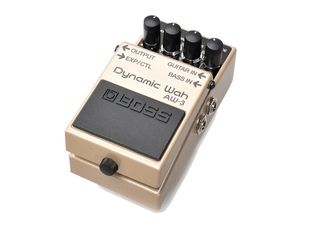
Auto-Wah
AUTO-WAHS (or envelope filters) work differently from a traditional wah pedal in that they don’t use a rocker pedal to control the sound.
Instead, they are controlled by your playing dynamics: how hard or softly you hit the strings. Essentially, you set a sensitivity level for the effect, and once your picking reaches that level, the wah effect is triggered. Most auto-wahs let you decide the sweep’s direction (low to high, or high to low) and sweep speed (how quickly it rises and how quickly it falls).
These controls let you create extremely fast movements, so it’s possible to create sounds with an auto-wah that you’d find difficult with a regular pedal. Some auto-wahs, such as the Boss AW-3 Dynamic Wah, use a low-frequency oscillator (LFO, controlled by the rate knob) like you’d find in a modulation pedal to control the sweep of the wah – this gives you consistent rhythmic sounds without tiring out your foot!
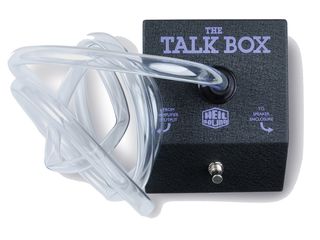
Talk Box
WHEN Tommy used to work on the docks, Richie got to work with the box. As well as providing the vocalised effect on Bon Jovi’s Livin’ On A Prayer, the talk box (not to be confused with a vocoder) was made famous by Peter Frampton, Foo Fighters, Aerosmith and many others.
The talk box itself doesn’t actually create the filtered effect: this is done by your mouth. It works by amplifying your guitar signal into a plastic tube, which is placed inside your mouth. When you change your mouth’s shape, the tone is filtered in the same way as your voice. The whole lot is then picked up by a microphone, and pumped out to your audience through a PA system.
You can grasp the idea behind it without your guitar or a talk box: try singing a continuous note, then shaping your mouth to create different vowel sounds. Notice how the sound you sing never changes, but the tone can go from ‘ahh’ to ‘ee’ to ‘ooh’, and so on. Heil Sound’s Talkbox is the most common unit for creating this sound, while the Danelectro Free Speech Talk Box lets you create the effect ‘in-line’ to your guitar amp, without the need for a PA system.
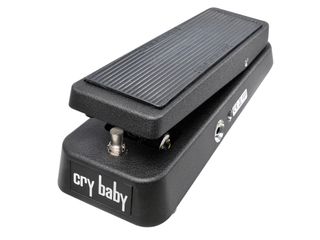
Wah
THE most common filter for guitarists is a wah pedal. This simple effect can add percussive effects, bring rhythm parts to life, or add extra vocal expression to solos.
Wah pedals usually create a band-pass filter (see diagram on page 54), and the ‘centre frequency’ of the wah sound is changed using the rocker pedal. In classic wah examples such as the Dunlop Cry Baby, the rocker pedal is attached to a control pot, similar to the ones you find on your guitar.
When the pedal is swept from the heel-down to toe-down setting, the pot turns and the wah-wah sound corresponds to the movement. Mechanical pots can often wear out, introducing a scratchy sound to your pedal, or they can even stop working entirely. To combat this, companies such as Morley make wah pedals that use a sensor inside, rather than a moving pot.
Wah pedals don’t usually have any controls apart from the rocker pedal and an on/off switch, but some come with additional circuits to increase the vocal quality of the pedal or add overdrive.
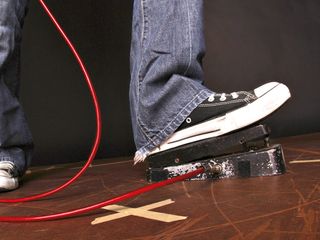
Rocking All Over The Wah
Try these techniques next time you plug in your wah...
The downbeat
This is the most obvious execution of a wah effect, and whether you own one or not, you’re probably tapping your foot in time already. Simply place your foot on the pedal starting in the heel-down position, and rock out a crotchet rhythm. You can also start off in the toe-down position for a reverse filter sweep. Simple, but hours of fun.
The backbeat
Accenting beats two and four with your wah will lend your sound some extra laidback funk. Here, the picking is exactly the same as in the first example, but notice how the feel changes.
The accent
Listen to Voodoo Child (Slight Return) and pay attention to how the wah filters the sound. Jimi used his pedal to accent particular notes by moving his foot in a less rigid pattern than the first examples.

Total Guitar is Europe's best-selling guitar magazine.
Every month we feature interviews with the biggest names and hottest new acts in guitar land, plus Guest Lessons from the stars.
Finally, our Rocked & Rated section is the place to go for reviews, round-ups and help setting up your guitars and gear.
Subscribe: http://bit.ly/totalguitar

“This golden gain machine covers the entire spectrum from gritty boost through to full-on fuzz”: Great Eastern FX’s Focus Fuzz Deluxe has got boost, drive, octave, fuzz... everything going on

“This is the only tremolo pedal in the world that lets you plot your own waveform shapes using controls you first got to grips with as a child”: SoundLad Sketchy review

“This golden gain machine covers the entire spectrum from gritty boost through to full-on fuzz”: Great Eastern FX’s Focus Fuzz Deluxe has got boost, drive, octave, fuzz... everything going on

“This is the only tremolo pedal in the world that lets you plot your own waveform shapes using controls you first got to grips with as a child”: SoundLad Sketchy review











